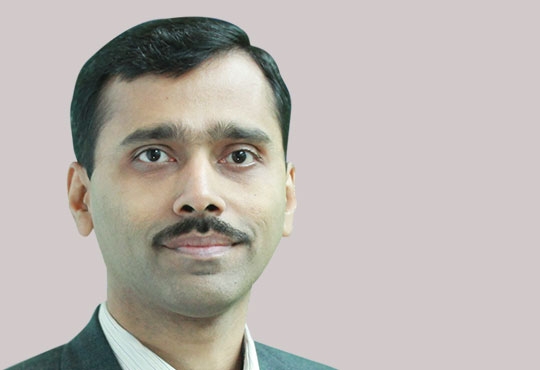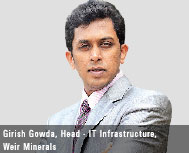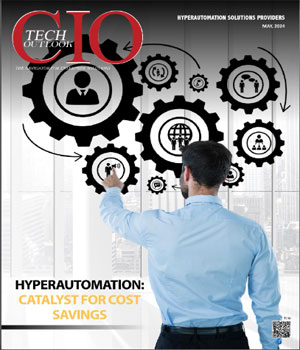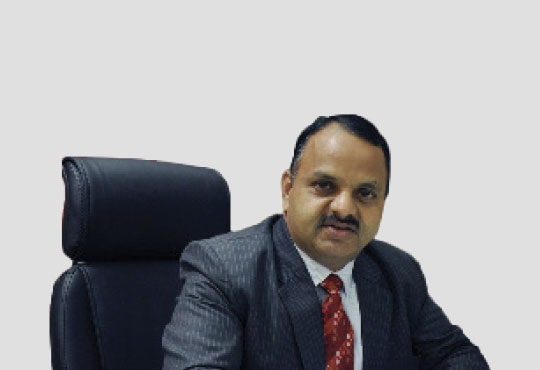
CIOTechOutlook >> Magazine >> June - 2016 issue
Internet of Things (IoT) Old Wine in New bottle
By
 The Internet of Things (IoT) is a system of interconnecting computing devices, mechanical and digital machines, objects, animals or people that are provided with unique identifiers (UID) and the ability to transfer data over a network without requiring human-to-human or human-to-computer interaction.
The Internet of Things (IoT) is a system of interconnecting computing devices, mechanical and digital machines, objects, animals or people that are provided with unique identifiers (UID) and the ability to transfer data over a network without requiring human-to-human or human-to-computer interaction.The idea is that not only your computer and your smartphone can talk to each other, but also all the things around you. From connected homes and cities to connected cars and machines to devices that track an individual’s behaviour and use the data collected for new kind of services.
The term Internet of Things is 16 years old. But the actual idea of connected devices had been around longer, at least since the 70s. Back then, the idea was often called “embedded internet” or “pervasive computing”. But the actual term “Internet of Things” was coined by Kevin Ashton in 1999.
While the Internet of Things is by far the most popular term to describe the phenomenon of a connected world, there are similar concepts that deserve some attention. Most of these concepts are similar in meaning but they all have slightly different definitions.
M2M - The term Machine to Machine (M2M) has been in use for more than a decade, and is well-known in the Telecoms sector. M2M communication had initially been a one-to-one connection, linking one machine to another. But today’s explosion of mobile connectivity means that data can now be more easily transmitted, via a system of IP networks, to a much wider range of devices.
Industrial Internet (of Things) -The term industrial internet goes beyond M2M since it not only focuses on connections between machines but also includes
human interfaces.
Web of Things - The Web of Things is much narrower in scope as the other concepts as it solely focuses on software architecture.
Industry 4.0 - It has the largest scope of all the concepts. Industry 4.0 describes a set of concepts to drive the next industrial revolution. It includes all kinds of connectivity concepts but also goes further to include real changes to the physical world around us such as 3D-printing technologies, new augmented reality hardware, robotics, and advanced materials.
To the public, IoT currently appears to be a mixture of smart home applications, wearables and an industrial IoT component. But actually it has the potential to have a much wider reach. When the connected world becomes reality, the Internet of Things will transform nearly all major segments – from homes to hospitals and from cars to cities.
Most of these segments carry the name “smart” like Smart Home or “connected” like Connected Health. Today’s major applications include:
Smart Home or “Home automation” describes the connectivity inside our homes. It includes thermostats, smoke detectors, lightbulbs, appliances, entertainment systems, windows, door locks, and much more.
Wearables - Whether it is the Jawbone Up, the Fitbit Flex, or the Apple Smartwatch – wearables make up a large part of the consumer facing Internet of Things applications.
Smart City - Smart city spans a wide variety of use cases, from traffic management to water distribution, to waste management, urban security and environmental monitoring. Smart City solutions promise to alleviate real pains of people living in cities these days. Like solving traffic congestion problems, reducing noise and pollution and helping to make cities safer.
Smart grids - A future smart grid promises to use information about the behaviours of electricity suppliers and consumers in an automated fashion to improve the efficiency, reliability, and economics of electricity.
Connected car - Whether it is self -driving or just driver-assisted, connectivity with other cars, mapping services, or traffic control will play a part in next generation cars. The in-car entertainment systems and remote monitoring are also interesting concepts to watch.
Connected Health - (Digital health/ Telehealth/Telemedicine) the concept of a connected health care system and smart medical devices bears enormous potential, not just for companies also for the well-being of people in general: New kinds of real time health monitoring and improved medical decision-making based on large sets of patient data are some of the envisioned benefits.
The Internet of Things is also expected to change business models in banking, insurance, and government, farming, etc. These use cases, however, are not yet as advanced as the business cases listed above.
CXO Insights
The Fundamental Transformation from Purchase to...
By Vinod Mathur, Sr.Director- Strategic Services, JDA Software
Disseminate Life Insurance by Employing Technology
By Manoj Jain, Director& CEO, Shriram Life Insurance
Work 2021: Prepare For A Flexible Future



